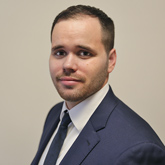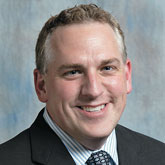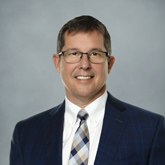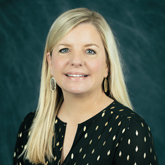Key takeaways from HTU’s Executive Pharmacy Exchange

Maximizing organizational strengths and structure is essential in managing the pharmaceutical enterprise. That was the premise of the Executive Pharmacy Exchange panel discussion at the HealthTrust University Conference in July.
Moderated by Aigner George, PharmD, Assistant Vice President, Pharmacy Solutions at HealthTrust, the discussion featured four pharmaceutical leaders from member organizations who provided their insights: Barry Baird, R.Ph, Vice President of Pharmacy for HCA Healthcare’s South Atlantic Division; Kara Fortune, PharmD, BCOP, Director of Pharmacy Consulting for HealthTrust, supporting Ardent Health Services; Jon Lakamp, PharmD, BCPS, Chief Pharmacy Officer, Mercy Health; and David Silverman, PharmD, BCPS, BCCCP, Vice President Pharmacy, Prime Healthcare.
Putting the right people in place

Structuring staff and securing the right leadership is imperative to organizational strength. Panelists described structuring their teams to ensure effective management at the regional, division and facility levels. But being able to adapt is also key.
“Despite our organizational chart, teams are flexible and respond to the different scenarios on the ground. We try to use people’s strengths,” said Silverman. Having the right processes in place from the top down is vital for turnover and succession planning. “What we’ve tried to do is emphasize the importance of communication and project management, so the entire team is aware which colleague should be completing which task at all times. If you don’t have good processes, then succession planning doesn’t really work.”
Succession planning is an integral piece of solid leadership. Baird said he was complacent until he realized that about 50% of his pharmacy leaders could retire within the next few years. “That sent a wave of panic over me when I looked at our second level of leadership and realized that we didn’t have that many managers who were interested in stepping up to the director roles,” he explained. “So, we immediately pivoted to try to create more growth opportunities.”
Embracing cross-functional collaboration

For an organization to meet its strategic objectives, it must have cross-functional collaboration. This is especially true of pharmacist leaders, who work with clinical, financial, legal and logistical issues every day—a reality that has become even more evident during COVID, the panelists pointed out.
“From talking to legal about vaccine transportation issues to billing advice from the finance team, pharmacy leaders were interacting with people we had not worked with in the past about things we were never involved in previously,” Silverman noted. “It has given pharmacy the opportunity to prove what we can do operationally, in addition to clinically. While our profession was already moving in that direction, the pandemic was a significant catalyst.”
“A lot of pharmacists from various health systems through-out the country were involved in COVID vaccinations from an inventory and logistical perspective,” added Lakamp. “But most of our pharmacists were the ones that were opening, designing and running the clinic day to day as well as staffing it. It was a great opportunity for pharmacy to demonstrate leadership. It brought pharmacy into the space of being more than just the product, but also delivering that care.”
Demonstrating the value of pharmacy services

Advocating for pharmacy initiatives includes demonstrating an economic benefit to financial leadership, but that’s not always easy. Pharmacy leaders are tasked with showing the value of a non-financial return on investment.
“In the line of business that we’re in, it always has to get back to quality patient care,” said Baird. “The more we incorporate metrics that demonstrate outstanding clinical and operational outcomes, the more successful we will be.”
Fortune’s team is working on an initiative around medication reconciliation (i.e., medication history), an effort that shows the “soft return” of efficiency. “We’re not having to spend 45 minutes calling five different pharmacies to get an accurate med history,” she explained. “Some folks are not as used to hearing the value piece of how it contributes to the ROI, so you have to figure out what those metrics are. It’s about always having a story to tell.”
Silverman explained it as a bit of a shell game, in that you use easily tangible savings and profits and reinvest them into more “intangible” things like infrastructure, which could impact patient satisfaction scores. “If you take care of the patient, usually the money will follow,” he said.
Managing supply expense & reconciling reimbursement
With the many different types of pharmacy offerings—retail, specialty, mail order—and spend on drugs increasing, pharmacy has the opportunity to pivot toward being a profit center.
“There are significant opportunities,” explained Lakamp. “Historically, most of our acute care inpatient pharmacies have been cost centers, as opposed to profit centers. But when we offer services in the ambulatory infusion space, it can help keep the lights on, so we can continue to provide care for patients.”
He added that it’s essential to have a balanced approach to reimbursement, taking a hard look at costs, revenue and the services offered, along with payor remittance and contract negotiations. “When you think about marrying up the cost and revenue data all in one place, you would think it might be a pretty easy thing to do. But the reality is, it took a lot of work to get to that point,” he said. “It’s something that has been a multi-year exercise in our contract negotiations with payors.”

“Financial toxicity is a real thing—we have to address it and can’t ignore it,” Fortune added. To analyze and improve Ardent’s margins, Fortune’s team created a committee structure to vote on outpatient infusion drug approvals. “We still have a lot of work to do just from the reporting standpoint … But we do a six- or nine-month look back to ensure the newly approved formulary drug additions are profitable.”
“Start where your biggest sources of spend and your most significant losses are,” advised Silverman. “Don’t look at every single drug. Look from the top down, and you’ll start to uncover those high-impact issues that you can start fixing sooner rather than later.”
Baird offered examples of how his team at HCA Healthcare has optimized profitability:
- Partnering with prescribers to ensure optimal reimbursement
- Allowing physician-owned infusion centers to operate within facility space
- Closely monitoring medication formulary and reimbursement
Silverman noted it’s all about making a calculation when it comes to pharmacy offerings. “Maybe we’re losing money on a drug, but if the patient is going to come here for surgery, they’re getting their radiology and labs done here. If the patient can’t come to the hospital anymore for an infusion, then we’ve lost their business forever,” he said. “It needs to be a clinical and a financial conversation.”
Transform your pharmacy care with HealthTrust Pharmacy Solutions.
Learn more here.
For more information about optimizing your pharmacy operations, email Aigner George at aigner.george@healthtrustpg.com
Share Email HTU, Q4 2021





